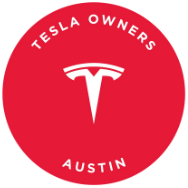General Motors (GM) has a long history of overcoming challenges, from surviving the 1970s oil crisis to weathering the competition from Japanese automakers in the 1980s. The company received a significant bailout from the U.S. government during the 2008-2009 financial crisis and managed to navigate through the COVID-19 pandemic. Despite these hurdles, GM now boasts the most diverse electric vehicle (EV) lineup among legacy automakers in the United States.
Looking ahead to 2025, GM faces a new set of challenges that could test its resilience. The company has heavily invested in scaling up its EV programs, offering a range of EVs powered by its Ultium battery and propulsion system. From the affordable Chevy Equinox EV to the luxurious GMC Hummer EV, GM has positioned itself as a key player in the EV market. In 2024, the company saw a surge in EV sales, outpacing Tesla in the final quarter of the year.
However, looming threats such as President Trump’s proposed tariffs on imports from Mexico and the potential repeal of the $7,500 federal clean vehicle credit pose risks to GM’s EV business. If these measures are implemented, prices of GM’s EVs could increase, impacting sales and margins. Despite these challenges, GM remains committed to its EV strategy and is prepared to weather the storm.
On the other hand, Tesla is making significant strides in the EV market, with CEO Elon Musk announcing plans to launch a robotaxi ride-hailing service in Austin and California. Tesla has applied for a permit to operate robotaxis in California, setting the stage for competition with companies like Waymo and Uber. While Tesla’s robotaxis will initially have human drivers, the company is betting on a future where fully autonomous vehicles dominate the market.
Meanwhile, changes in the EV tax credit system in the U.S. have made it easier for buyers to obtain tax credits at the point of sale. However, some dealers have not fully adapted to the new system, leading to confusion and potential denials of tax credits for EV buyers. Despite these challenges, the point-of-sale system has been successful in reducing upfront costs for EV buyers and driving sales.
As the auto industry navigates through economic uncertainties and policy changes, automakers like GM and Tesla must adapt to new challenges and continue innovating in the EV space. With evolving technologies, shifting market dynamics, and regulatory changes, the industry faces a complex landscape. It remains to be seen which automakers will emerge stronger from this economic storm and lead the way in the future of mobility.

